The Parks of Assam
The Famous National Parks In Assam
1. Dibru-Saikhowa National Park - Near Tinsukia
Facilities
Restrooms: Basic restroom facilities are available at certain points within the park, especially near the entry and visitor centers.
Cafes: There are no cafes within the park itself. Visitors are advised to carry their own food and water.
Clinics: There are no clinics inside the park. The nearest medical facilities are in Tinsukia town.
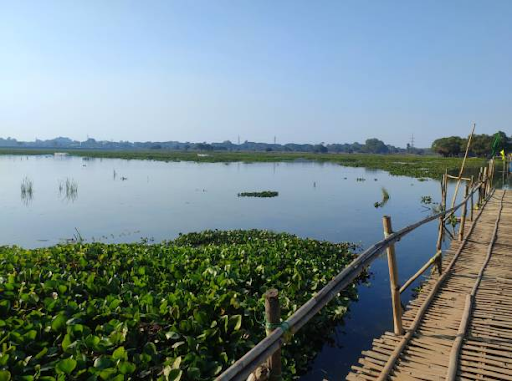
Hotels Available
Hotels in Tinsukia: While there are no hotels inside the park, there are several accommodation options in and around Tinsukia, including:
- Hotel Royal Highness in Tinsukia
- Hotel Highway in Tinsukia
- Wathai Heritage Bungalow in Limbuguri Tea Estate, which offers a closer experience to nature.
Events Planned
Special Tours: There are no regular events scheduled in Dibru-Saikhowa National Park. However, special bird-watching tours and wildlife photography tours are occasionally organized by local tour operators.
Activities Done
Bird Watching: The park is a haven for bird watchers with over 400 species of birds.
Boat Rides: Explore the waterways and spot various wildlife.
Trekking and Nature Walks: Several trails offer the opportunity to explore the diverse flora and fauna.
Wildlife Safaris: Jeep safaris are available to see the park’s wildlife.
Photography: The park’s scenic beauty and rich wildlife provide excellent photography opportunities.
What is it Famous For?
Biodiversity: The park is known for its rich biodiversity, including various species of birds, mammals, and reptiles.
Riverine Landscapes: Dibru-Saikhowa is characterized by its riverine and wetland ecosystems.
Famous Animal
Feral Horses: The park is famous for its population of feral horses.
White-winged Wood Duck: This endangered bird species is also a highlight of the park.
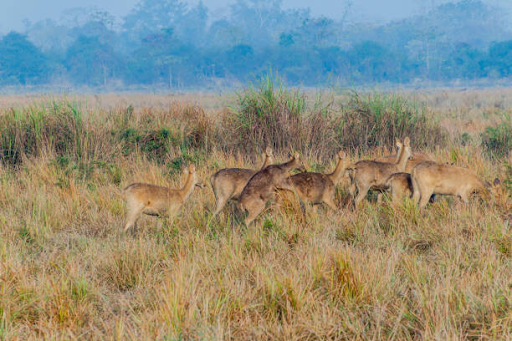
Plant/Vegetation/Climate
Vegetation: The park features a mix of semi-evergreen forests, deciduous forests, and grasslands. The riverine and wetland ecosystems are particularly noteworthy.
Climate: The park experiences a subtropical monsoon climate with heavy rainfall during the monsoon season (June to September) and a cool, dry winter (November to February).
Restaurants Available
Local Eateries: There are no restaurants within the park. Dining options are available in Tinsukia town, including:
- Eat Repeat
- Cafe Mocha
- Food Court Restaurant
Recommended Activities
Bird Watching: Especially recommended during the migratory season.
Boat Safari: A unique way to experience the park’s aquatic life.
Nature Walks: To explore the flora and fauna up close.
Wildlife Photography: Ideal for capturing the park’s diverse wildlife and scenic beauty.
Exploring the Grasslands: To see the feral horses and other grassland species.
2. Dehing Patkai National Park - Near Digboi, Margherita
Facilities
Restrooms: Basic restroom facilities are available at the park entrance and near some of the designated tourist spots.
Cafes: There are no dedicated cafes within the park, but nearby towns such as Digboi and Margherita have cafes and eateries.
Clinics: Medical facilities are not available within the park, but there are clinics and hospitals in nearby towns like Digboi and Margherita.
Hotels Available
Nearby Towns: There are several hotels and guest houses in Digboi, Margherita, and Tinsukia. Some popular options include:
- The Riverwood Forest Retreats, Dehing Patkai
- Wathai Heritage Bungalow, Limbuguri Tea Estate
- Hotel Royal Highness, Digboi
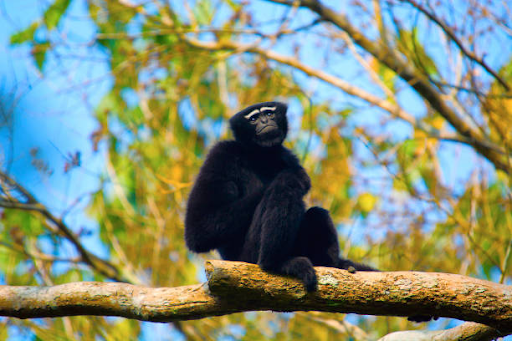
Events Planned
Wildlife Safaris: Regular wildlife safaris are organized to explore the rich biodiversity of the park.
Bird Watching Tours: Special tours are organized for bird watchers, given the park's rich avian population.
Eco-Tourism Festivals: Occasionally, eco-tourism festivals and events are organized to promote conservation and awareness.
Activities Done
Wildlife Safaris: Guided safaris to spot various animals and birds.
Bird Watching: The park is a paradise for bird watchers with numerous species of birds.
Trekking: Several trekking trails are available for adventure enthusiasts.
Photography: The park offers excellent opportunities for wildlife and nature photography.
What is it Famous For?
Biodiversity: Dehing Patkai National Park is famous for its incredible biodiversity, often referred to as the "Amazon of the East."
Unique Flora and Fauna: The park is home to a wide range of unique species, both plant and animal.
Famous Animal
Hoolock Gibbon: The park is particularly famous for the Hoolock Gibbon, India's only ape species.
Clouded Leopard: Another significant animal found here is the clouded leopard.
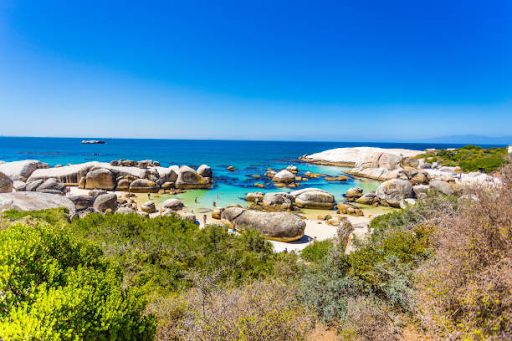
Plant/Vegetation/Climate
Vegetation: The park features tropical wet evergreen forests, with a rich variety of plant species.
Climate: The region experiences a tropical monsoon climate with heavy rainfall, especially during the monsoon season.
Notable Trees: Notable vegetation includes species like Hollong, Mekai, and Nahor.
Restaurants Available
Nearby Towns: While there are no restaurants within the park, nearby towns like Digboi and Margherita have several dining options, including:
- Singpho Villa Restaurant, Margherita
- The Food Court, Digboi
- Dhaba-style eateries along the highways
Recommended Activities
Wildlife Safari: Highly recommended for those looking to explore the diverse wildlife of the park.
Bird Watching: A must-do activity for bird enthusiasts.
Trekking: For adventure lovers, trekking through the dense forests can be an exhilarating experience.
Photography: Ideal for photography enthusiasts due to the park's rich biodiversity and scenic beauty.
Eco-Tours: Engaging in eco-tours and educational programs to learn more about conservation efforts.
3. Kaziranga National Park - Near Kaliabor
Facilities
Restrooms: Available at various entry points and inside the park at designated spots.
Cafes: There are a few small cafes and refreshment centers near the entry points and inside the park.
Clinics: Basic medical facilities are available near the park. For major health concerns, it is advisable to visit nearby towns or cities like Nagaon or Guwahati.
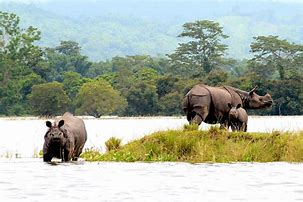
Hotels Available
- Kaziranga Resort
- Iora - The Retreat
- Diphlu River Lodge
- Wild Grass Lodge
- Infinity Resort
- Bonhabi Resort
Events Planned
Kaziranga hosts several events, especially during the peak tourist season (November to April). These may include:
- Wildlife Photography Workshops
- Bird Watching Tours
- Cultural Shows featuring local Assamese culture and dances
Activities Done
Jeep Safari: The most popular way to explore the park.
Elephant Safari: Offers a unique perspective of the park, particularly for spotting rhinoceroses.
Bird Watching: With over 450 species of birds, it's a paradise for bird watchers.
Boat Ride on the Brahmaputra River: Provides a chance to see river dolphins and other aquatic life.
Nature Walks: Guided tours for a closer look at the flora and fauna.
What is it Famous For?
Kaziranga National Park is famous for its rich biodiversity and conservation success stories.
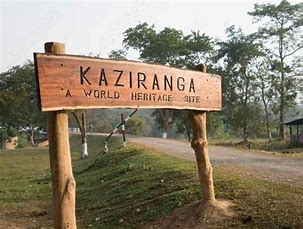
Famous Animal
The park is best known for its population of the Indian One-Horned Rhinoceros, which constitutes about two-thirds of the world's total population of this species.
Plant/Vegetation/Climate
Vegetation: The park consists of tall elephant grass, marshland, and dense tropical moist broadleaf forests.
Climate: Kaziranga experiences a tropical monsoon climate with heavy rainfall during the monsoon season (June to September) and a mild winter (November to February).
Restaurants Available
- Jupuri Ghar Restaurant: Offers a variety of local and Indian cuisines.
- Hornbill Restaurant: Known for its traditional Assamese dishes.
- Kohora Village Cafes: Several small eateries offering local snacks and meals.
Recommended Activities
Jeep and Elephant Safaris: Essential for experiencing the wildlife up close.
Bird Watching: Especially recommended during the winter months when migratory birds are present.
Cultural Visits: Engage with local communities to learn about Assamese culture.
Photography: Both wildlife and landscape photography opportunities abound.
